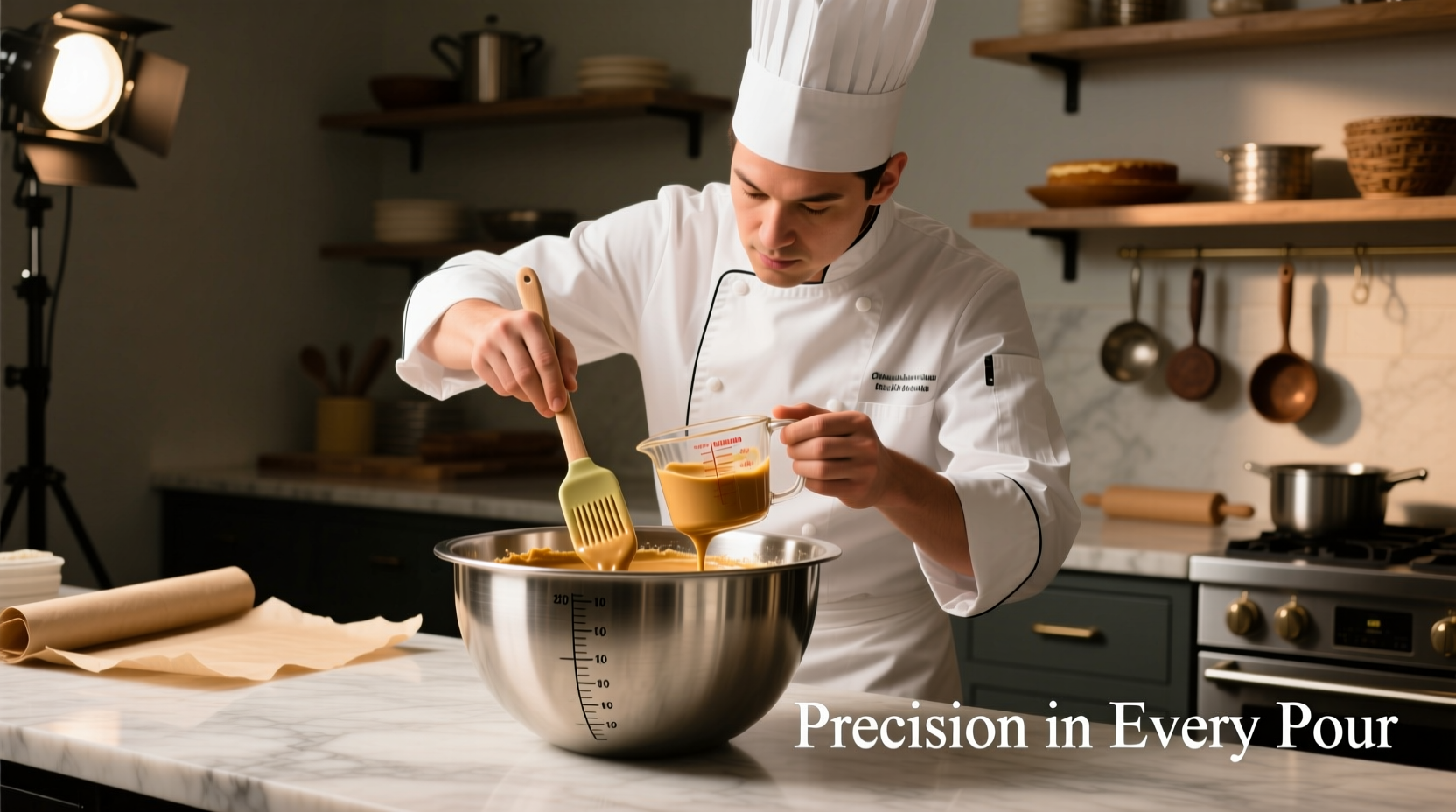Follow this precise 7-step method to bake a perfect cake every time: 1) Gather ingredients at room temperature, 2) Cream butter and sugar for 5 minutes, 3) Add eggs one at a time, 4) Alternate dry and wet ingredients, 5) Fill pans ⅔ full, 6) Bake at 350°F (175°C) for 25-35 minutes, 7) Cool completely before frosting. This foolproof technique works for most cake varieties and prevents common baking failures like sinking or dryness.
Nothing beats the satisfaction of pulling a perfectly risen, golden cake from your oven. Whether you're celebrating a birthday or simply craving something sweet, mastering basic cake baking opens doors to endless dessert possibilities. As a professional chef with years of experience teaching home bakers, I've refined this process to eliminate guesswork and guarantee success—even for first-time bakers.
Why This Method Works for Every Cake
The creaming method forms the foundation of nearly all cake recipes because it incorporates air into the batter, creating that essential light texture. Proper creaming—a technique many home bakers rush—requires beating room-temperature butter and sugar together for a full 5 minutes until pale and fluffy. This extended mixing time creates thousands of tiny air pockets that expand during baking, giving your cake its signature rise without relying solely on chemical leaveners.

Your Cake Baking Roadmap
Follow this sequence to avoid common pitfalls. Each stage builds on the previous one—skipping or rushing any step compromises your final result.
Preparation Phase: Setting Up for Success
Temperature matters most—this is where 80% of baking failures begin. Take butter, eggs, and dairy out of the refrigerator 60-90 minutes before starting. Cold ingredients won't emulsify properly, leading to curdled batter and dense cakes. Meanwhile, preheat your oven 20 minutes before baking; ovens require time to reach and stabilize at the target temperature.
Measure ingredients precisely using the spoon-and-level method for dry ingredients. Professional bakers always weigh ingredients—125g of flour equals one cup, but scooping directly from the bag can add 20% more flour, resulting in dry cake. Keep your workspace organized with all ingredients prepped ("mise en place") before beginning.
Mixing Phase: Building Flavor and Structure
Creaming isn't just mixing—it's aeration. Start with softened (not melted) butter cut into tablespoon-sized pieces. Beat on medium speed for 2 minutes before adding sugar. Continue beating 3 more minutes until the mixture resembles pale yellow whipped cream. Add eggs one at a time, waiting 30 seconds between additions to ensure proper emulsification.
| Cake Type | Flour Ratio | Sugar Ratio | Leavening | Best For |
|---|---|---|---|---|
| Butter Cake | 2:1 | 1:1 | Baking powder | Celebration cakes |
| Sponge Cake | 1:1 | 1:1 | Whipped eggs | Roll cakes, trifles |
| Chiffon Cake | 1.5:1 | 1:1 | Baking powder + egg whites | Layer cakes |
When incorporating dry and wet ingredients, begin and end with dry components. Add one-third of dry ingredients, mix until just combined, then half the liquid. Repeat, finishing with the last dry portion. Overmixing at this stage develops gluten, causing toughness. Stop as soon as no streaks remain—batter should look slightly lumpy.
Baking Phase: Precision Timing and Temperature
Filling pans two-thirds full ensures proper rising without overflow. Rotate pans halfway through baking for even heat distribution—oven temperatures vary by as much as 25°F between front and back. The ideal baking temperature for most cakes ranges between 325-350°F (163-177°C); higher temperatures cause rapid rise followed by collapse.
Don't rely solely on timers—ovens vary significantly. Begin checking 5 minutes before the minimum time. Insert a toothpick near the center; it should come out with moist crumbs, not wet batter. The cake's edges will pull slightly away from the pan, and the top will spring back when lightly pressed.
Cooling and Finishing: The Critical Final Steps
Resist the temptation to remove cakes immediately. Let them cool in pans for 15-20 minutes to set structure—removing too soon causes breakage. Then transfer to wire racks to cool completely (2-3 hours). Frosting a warm cake melts the icing and creates a gummy texture.
Troubleshooting Common Cake Problems
Sunken center? Usually caused by underbaking, opening the oven door too early, or excess leavening. Check expiration dates on baking powder—old leaveners lose potency.
Dry texture? Overmeasuring flour or overbaking are the culprits. Set timers for the minimum baking time and check frequently. Insert an instant-read thermometer into the center—it should read 200-210°F (93-99°C) when done.
Tunneling (large holes)? Results from overmixing after adding dry ingredients. Mix only until incorporated—lumps are acceptable.
When to Adjust the Basic Method
Different cake types require specific modifications while maintaining the core technique:
- Chocolate cakes: Replace ¼ cup flour with cocoa powder; add boiling water to bloom cocoa flavors
- Layer cakes: Use slightly lower temperature (325°F) for even baking through thicker layers
- High-altitude baking: Reduce sugar by 1-2 tablespoons and increase liquid by 2-4 tablespoons above 3,000 feet
Professional bakers follow the FDA's Bake Safe guidelines for food safety, particularly regarding egg handling and proper internal temperatures. Always wash hands thoroughly before handling ingredients and ensure your workspace is clean.











 浙公网安备
33010002000092号
浙公网安备
33010002000092号 浙B2-20120091-4
浙B2-20120091-4